1. Predictive Analytics for Early Warning
Artificial Intelligence plays a pivotal role in early warning systems by analyzing vast datasets to forecast natural disasters before they strike. Machine learning models can sift through historical weather patterns, real-time sensor data, and satellite imagery to recognize subtle signs of impending events like hurricanes, floods, and wildfires. By providing more lead time and accurate predictions, AI-driven analytics enable authorities to evacuate areas sooner, stage emergency supplies, and activate response plans proactively. This early warning capability is especially significant as climate change increases the frequency and intensity of extreme weather, making timely alerts crucial. Overall, AI enhances the precision and speed of disaster forecasts, improving community preparedness and potentially saving lives through earlier interventions.
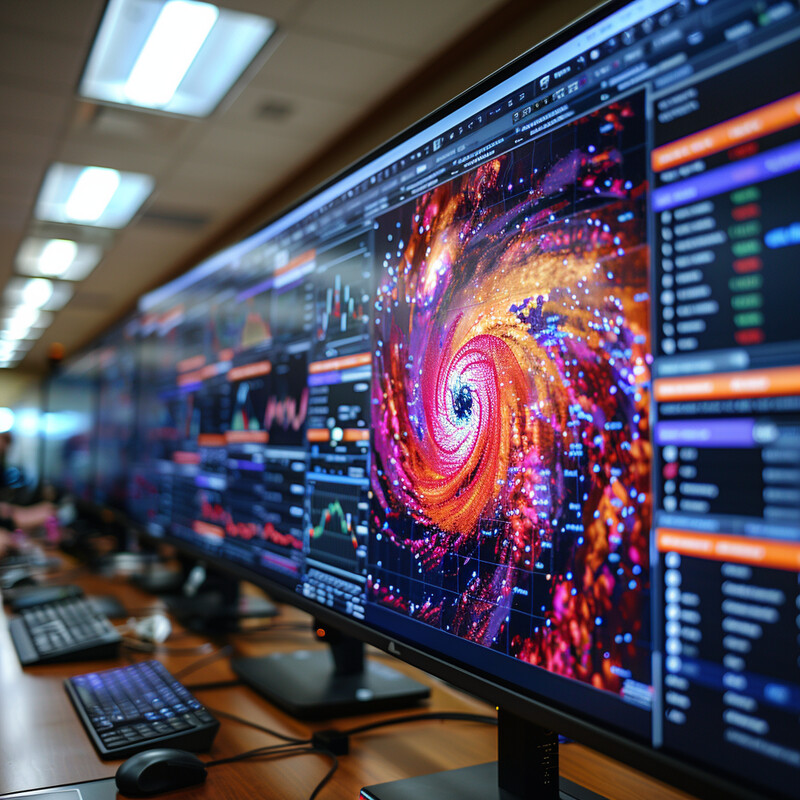
AI-based forecasting models have already demonstrated markedly improved early warning performance. For example, during the 2024 Atlantic hurricane season, an AI weather model predicted Hurricane Milton’s Florida landfall location to within 13 miles a full five days in advance. Similarly, another AI model correctly forecast Hurricane Beryl’s Texas landfall nearly a week before it occurred. These AI predictions were notably ahead of and more precise than many conventional forecasts. In the realm of flood prediction, AI systems are also extending lead times – Google’s AI flood forecasting expansion in 2024 increased warning lead time from 5 days to 7 days and expanded coverage to over 100 countries, potentially protecting 700 million people (as opposed to 460 million before). Such outcomes illustrate how predictive analytics powered by AI can outperform traditional models and give communities valuable extra time to prepare.
2. Damage Assessment
In the immediate aftermath of a disaster, rapidly assessing damage is essential for effective response. AI greatly accelerates this process by analyzing post-disaster imagery (from satellites, drones, or aircraft) to identify destroyed buildings, infrastructure damage, and blocked roads. Computer vision algorithms can automatically detect and categorize damage severity (e.g. collapsed structures, moderate damage, intact areas) across wide regions far faster than manual surveys. This allows emergency managers to map out the hardest-hit zones within hours instead of days. Quick, AI-driven damage assessments help prioritize relief efforts – directing search and rescue teams, utilities, and supplies to the locations of greatest need. In short, AI provides a fast, objective overview of disaster impact, enabling a more organized and efficient recovery by focusing resources where they will have the most impact.
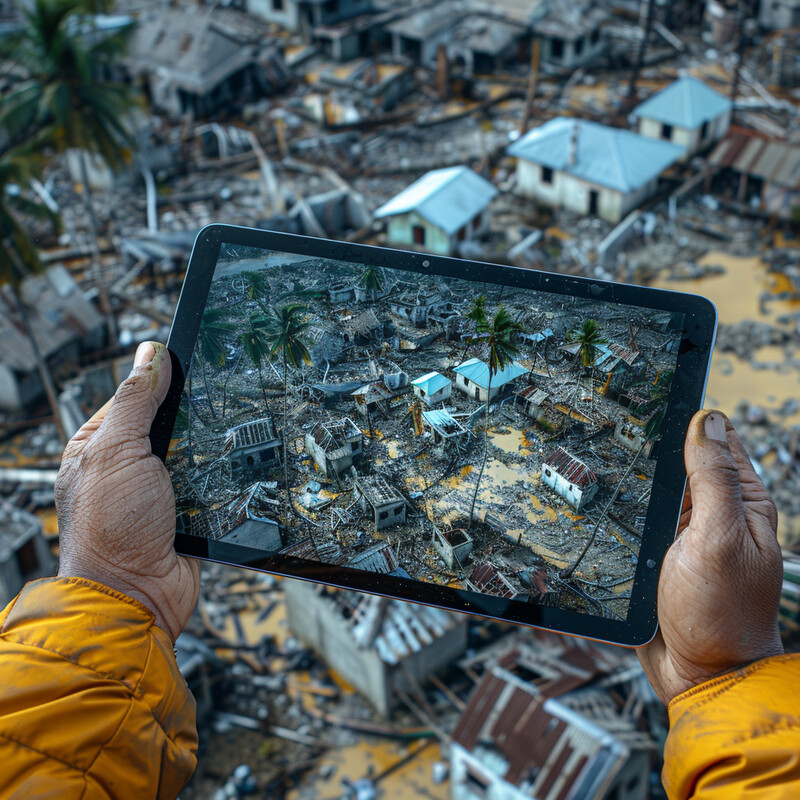
AI-based damage assessment has proven its value in recent disasters by dramatically reducing the time needed to evaluate impact. Following the February 2023 Turkey–Syria earthquake, for instance, a machine learning model was used to analyze high-resolution satellite images of affected cities. Within the first 3 days after the quake, this AI system helped estimate that about 3,849 buildings were damaged or destroyed across four cities, including roughly 7.4% of all structures in the heavily hit city of Kahramanmaraş. Such automated mapping far outpaced traditional ground surveys. In parallel, researchers reported that incorporating multiple data sources (satellite radar, optical imagery, and seismic data) into an AI damage detection model improved classification accuracy by 11.25% over single-source methods. These examples show how AI enables quicker and more accurate damage assessments: thousands of buildings can be evaluated in days with higher precision, which helps authorities prioritize rescue and repair operations in the most devastated areas.
3. Resource Optimization
Efficiently distributing relief resources is another area where AI is making a significant impact. In a disaster, needs for food, water, shelter, and medical aid often outstrip available supplies, and infrastructure damage can complicate delivery logistics. AI helps optimize the use of limited resources by analyzing real-time data on demand, infrastructure status, and transportation routes. Intelligent algorithms can prioritize which areas should receive supplies first based on severity of impact or population needs, and can compute the best routes for convoys or drones to avoid blocked roads. AI can also forecast resource consumption – for example, predicting how much water or medicine will be needed in a region – to pre-position stocks accordingly. By improving the precision of resource allocation and delivery scheduling, AI ensures that aid reaches the right places faster and with less waste. This leads to more lives saved and a quicker community recovery, even when disaster conditions are chaotic.
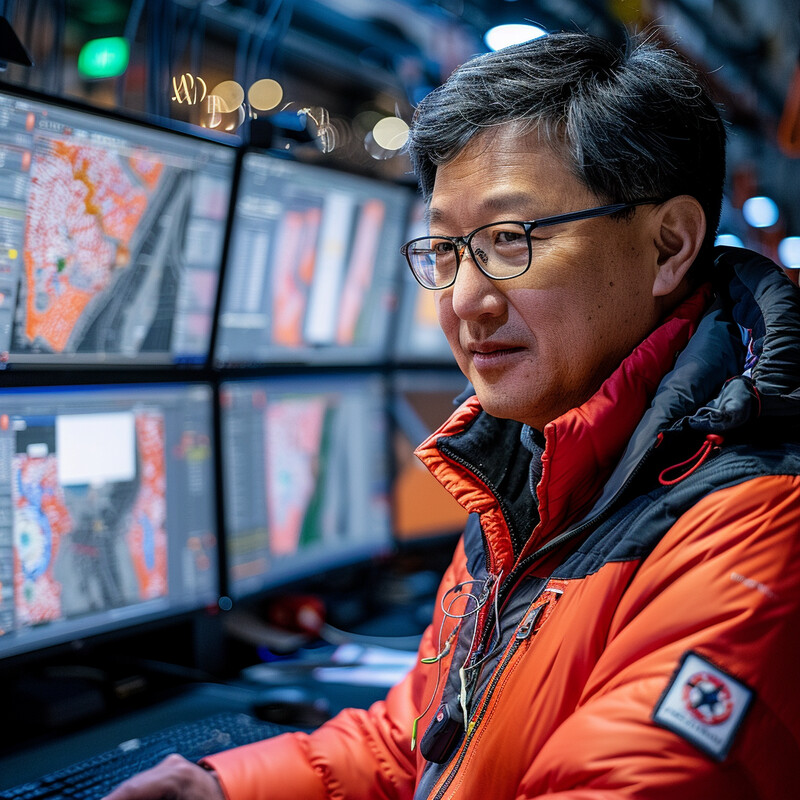
Recent disaster responses have leveraged AI to target aid more effectively. In 2023, the humanitarian organization GiveDirectly used AI-driven analysis of satellite imagery to guide relief efforts after major hurricanes. Following Hurricane Ian (2022) and Hurricane Milton (2023), the nonprofit partnered with Google to compare pre- and post-storm images and automatically identify the worst-affected neighborhoods. This allowed them to prioritize those areas for distributing emergency cash grants and supplies. Such AI-based targeting ensured that limited aid went first to communities with the most severe damage (for example, neighborhoods that AI flagged with widespread destruction or flooding) rather than being spread too thinly. Similarly, AI logistic systems have been used to optimize delivery routes amid disaster. During winter storms in New England, the city of Boston began using an AI weather platform to decide when and where to deploy snowplows and salt trucks ahead of heavy snowfall, improving the efficiency of road treatment and keeping critical supply routes open. These examples show that AI can analyze impact data and logistical constraints to significantly enhance resource allocation – getting the right aid to the right place at the right time.
4. Search and Rescue Operations
AI enhances search and rescue (SAR) operations by helping responders find survivors more quickly, especially in large or hard-to-access disaster zones. After earthquakes, landslides, or hurricanes, AI-powered drones and robots can scan vast areas using cameras and sensors (like thermal imaging) to detect signs of life – such as human shapes, heat signatures, movements, or even cries for help – that might be missed by human eyes or ears on the ground. Machine learning algorithms can rapidly process this imagery or audio, flagging locations where people are likely trapped or stranded. This guidance allows SAR teams to focus their efforts where survivors are most likely to be, rather than searching blindly. AI can also coordinate multiple search assets (drones, dogs, teams) to cover areas systematically. By reducing the time needed to locate survivors and minimizing the exposure of human rescuers to danger, AI-assisted search and rescue increases the chances of saving lives within the critical window after a disaster.

Innovative AI tools are already making search and rescue more effective. In Japan, researchers recently developed an AI-based noise filtering system to help detect survivors’ voices in post-disaster environments. Mounted on drones, this GAN-powered algorithm learns the specific sound of the drone’s propellers and subtracts that noise from the audio feed, allowing human cries and calls for help to be heard clearly. In tests on actual UAVs, the AI noise suppression eliminated the loud rotor buzz and amplified distant human sounds, making it much easier for operators to catch faint shouts from people trapped under rubble. This technology addresses a major challenge in aerial search (loud drone noise drowning out survivor sounds) and can significantly speed up victim location. In another example, an AI-driven drone system used by mountain rescue teams in Scotland was able to spot a missing hiker in minutes by analyzing drone images, even when ground teams had passed within 30 meters without noticing him. Such successes highlight how AI can augment human senses and direct rescuers to survivors faster. Given that survival rates plummet from ~90% in the first 24 hours to around 20% by 72 hours after an incident, the time saved by AI guidance can translate directly into lives saved.
5. Communication Systems
Maintaining reliable communication is critical during disasters, and AI helps keep people connected when it matters most. AI can dynamically manage emergency communication networks – for example, by intelligently routing calls or data through whatever infrastructure remains intact, or by allocating bandwidth preferentially to life-saving communications. In practice, this means an AI system might detect that a cell tower is down and automatically switch devices to an alternate tower or satellite link. AI can also assist in setting up ad-hoc networks (such as portable cell sites or radio relays), optimizing their configuration for changing conditions. Furthermore, AI-driven language processing is used to overcome communication barriers: translating warnings and instructions into multiple languages in real time to reach diverse populations. By ensuring that emergency messages get through and that responders and civilians can coordinate, AI-stabilized communication systems reduce chaos and improve the disaster response.

One striking example is how AI is speeding up multilingual emergency alerts. In 2023, the U.S. National Weather Service began using an AI-powered translation system to issue severe weather warnings in Spanish and Chinese, alongside English. In preliminary tests, forecasters using the AI model reduced the translation time of hurricane warnings from about 60 minutes to under 10 minutes. This partnership with an AI company enabled near real-time conversion of critical forecasts, ensuring non-English-speaking communities receive life-saving information almost immediately rather than an hour late. AI is also helping manage network traffic during crises. Major telecom providers have started deploying machine learning algorithms that detect network congestion or damage and then reroute communications through alternative channels to prevent outages. For instance, AI systems can prioritize 911 calls and emergency responder radios on cellular networks when bandwidth is limited, dynamically throttling less important traffic. These improvements, while behind the scenes, mean that during a disaster, people are more likely to get the alerts, calls, and information they need. The dramatic cut in translation time by the Weather Service’s AI tool illustrates how such technology can broaden the reach and speed of emergency communications, potentially protecting more lives.
6. Victim Identification
AI technologies are aiding in the swift identification of victims and missing persons after disasters. Facial recognition and other biometric AI systems can quickly match photographs of displaced or unconscious individuals against databases of missing people. This is crucial in the chaotic aftermath of a disaster, when family members may be separated or victims may be injured and unable to communicate. By automating the identification process, AI can drastically reduce the time it takes to reunite families or confirm the status of a loved one. These systems work by analyzing unique features (faces, fingerprints, even tattoos) and comparing them across records far faster than manual checks. In hospitals and shelters, AI identification tools help officials correctly identify injured survivors, ensuring they receive proper medical history and facilitating contact with relatives. Ultimately, by rapidly putting names to faces, AI-driven victim identification brings compassion and order to disaster recovery, helping families find each other and authorities account for everyone affected.
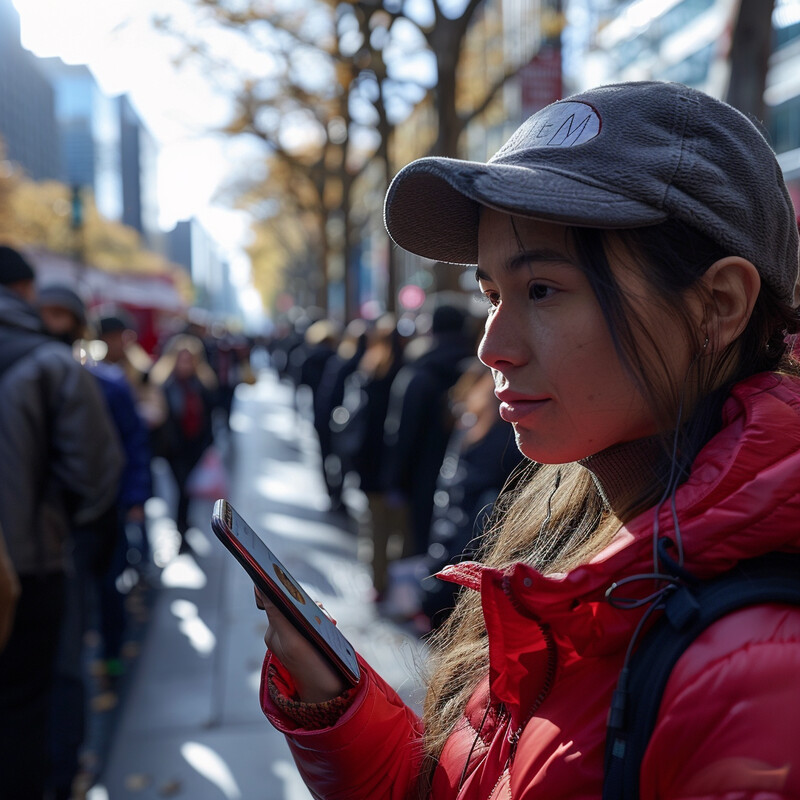
The impact of AI on victim identification was demonstrated after the 2023 Turkey earthquake, which left thousands of children separated from their families. Turkish authorities deployed a facial recognition program called DerinGÖRÜ, developed by the national research council TÜBİTAK, to help identify lost children and reunite them with parents. Within ten days of the February quake, this AI system had successfully traced the identities of 144 rescued children who could not initially give their names. By cross-matching photos of unaccompanied kids against missing persons reports, it helped reunite more than 350 of the approximately 1,400 separated children with their families in that period. As of late February, Turkish officials reported that continued use of the AI matching program had enabled over 200 additional child-parent reunifications that might have otherwise taken much longer. This rapid identification effort, powered by facial recognition AI, dramatically sped up family reunification compared to traditional methods. It highlights how AI can handle the huge scale of post-disaster identification – sorting through thousands of faces and records in moments – to bring answers and relief to families in the wake of tragedy.
7. Simulation and Training
AI is revolutionizing disaster preparedness training through advanced simulation. Rather than learning only from past events or drills, emergency responders can now practice in realistic, AI-generated disaster scenarios before a real one strikes. AI-driven simulation platforms (often using virtual reality or augmented reality) create immersive training exercises – for example, a virtual earthquake scene with collapsing buildings and injured victims, or a hurricane scenario with flooding and high winds. These simulations can be dynamically adjusted by AI to present different challenges or to respond to the trainees’ actions, providing a more interactive learning experience. Responders can therefore hone decision-making skills, teamwork, and techniques in a safe virtual environment that feels very real. AI also tracks performance during these exercises, giving feedback on what strategies worked or where mistakes were made. This kind of training significantly improves readiness by exposing teams to a variety of disaster conditions that would be impossible to practice in real life. As a result, when an actual disaster occurs, those responders have effectively “seen it before” and can act faster and more effectively.
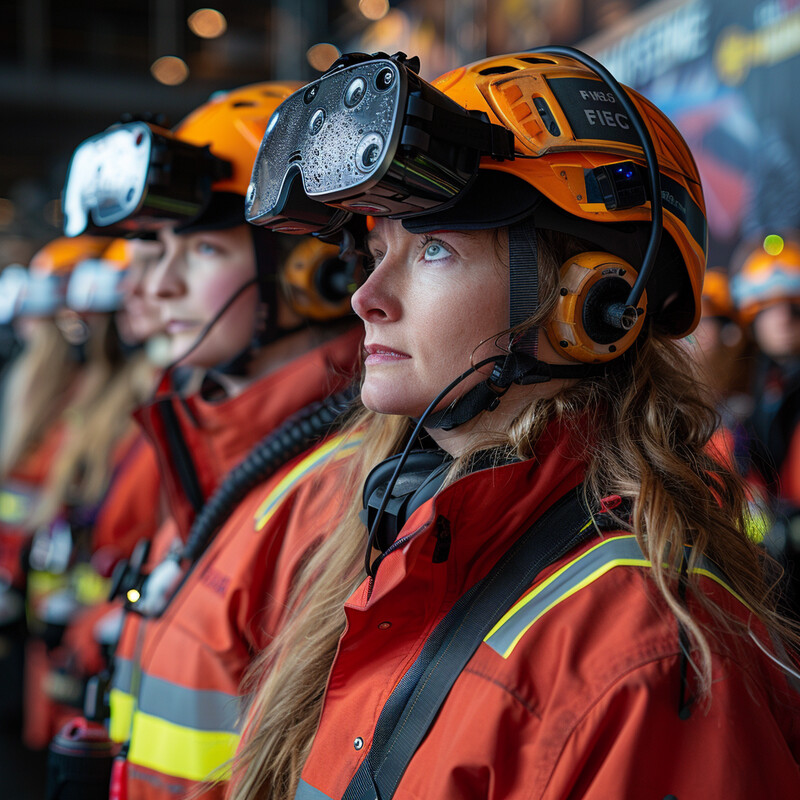
Immersive training systems using AI and virtual reality have yielded strong results in boosting responder preparedness. A 2024 study evaluated an AI-driven VR simulation for mass-casualty incident training with hundreds of EMTs and paramedic trainees. The feedback was overwhelmingly positive: 95% of participants said they would recommend the VR disaster training to other first responders, and a similar 94% rated the realism and effectiveness of the simulation as “good” or “excellent”. Notably, the virtual patients and chaotic scene were so life-like that 91% felt the scenario was as realistic as an actual disaster environment. These trainees reported that the simulator helped them practice triage and emergency decision-making under pressure in ways traditional drills could not. Other research has found that responders who train in AI-supported simulations show improved performance – for instance, making triage decisions faster and with greater accuracy – during subsequent live exercises. The ability to repeat complex scenarios (e.g., an earthquake with mass injuries) multiple times in VR also builds responders’ confidence and muscle memory. Overall, studies indicate that AI-based disaster simulations significantly enhance learning outcomes and readiness, as reflected by the 95% approval rating from trainees who have experienced these systems.
8. Real-time Decision Support
During an active disaster response, commanders must make high-stakes decisions rapidly as conditions evolve. AI provides real-time decision support by continuously analyzing incoming data (weather updates, social media feeds, sensor readings, etc.) and offering actionable insights. These AI systems act as an ever-vigilant assistant in emergency operations centers: they might predict where conditions are likely to worsen, flag emerging hazards, or suggest optimal actions based on myriad factors that humans can’t synthesize as quickly. For example, AI can help fire chiefs decide where to deploy crews next by forecasting a wildfire’s spread, or assist city officials in choosing evacuation routes by analyzing traffic sensor data in real time. Importantly, the AI doesn’t replace human judgment but augments it – filtering noise and presenting the most relevant information to support informed decisions. By guiding responders with data-driven recommendations (e.g. which neighborhood to evacuate first, or how to reroute relief convoys around new road obstructions), AI-driven decision support tools help manage the chaos of disaster situations more effectively and can improve the overall outcome of the response.

AI-driven decision support systems are already in use to help officials respond more smartly in real time. For instance, several U.S. cities have integrated an AI weather intelligence platform (developed by startup Tomorrow.io) into their municipal operations. In Boston, this system analyzes hyper-local weather forecasts and live road conditions to assist city officials in winter storm response. It has been used to determine the optimal timing and routes for pre-salting roads ahead of snowstorms, ensuring that plow and salt truck deployments are both timely and efficient. By crunching data on expected snow intensity and traffic patterns, the AI helps Boston’s public works department make better decisions about where and when to treat roads, reducing accidents and keeping transportation running. In another case, during California’s 2023 wildfire season, the WIFIRE AI program provided incident commanders with continuously updated, high-resolution fire spread predictions, improving their situational awareness on where the fire might move next. Emergency management agencies also began testing conversational AI (like “DisasterGPT” assistants) that can synthesize multiple data streams – from flood gauges to 911 calls – and answer questions for commanders (e.g., “Which hospitals are at capacity right now?”). These tools have shown potential to speed up information retrieval and highlight critical developments. The early adopters report that such AI support systems make on-the-fly decisions more data-driven and can cut down the time needed to analyze complex evolving situations, thereby accelerating the overall response.
9. Infrastructure Recovery
After the initial crisis has passed, communities face the daunting task of rebuilding critical infrastructure – power grids, water systems, roads, bridges – as quickly and safely as possible. AI is improving this recovery phase by helping engineers assess structural integrity and prioritize repairs. Using sensor data (like strain gauges or smart meters) and damage reports, AI models can predict which infrastructure components are at risk of failure if not fixed promptly. This allows officials to rank repair jobs not just by visible damage, but by hidden risk: for example, an AI might flag a bridge with subtle structural weaknesses as a higher priority than another that looks worse but is actually stable. AI can also optimize restoration schedules and resource allocation, ensuring that repair crews, construction equipment, and materials are sent to the most critical sites first. In some cases, AI-driven “digital twins” of infrastructure – virtual models updated in real time – are used to simulate different recovery strategies and find the most effective approach. By guiding a faster, smarter infrastructure recovery, AI helps minimize downtime for essential services (electricity, clean water, transportation) and reduces the economic losses and public safety hazards that prolonged outages or collapses would cause.
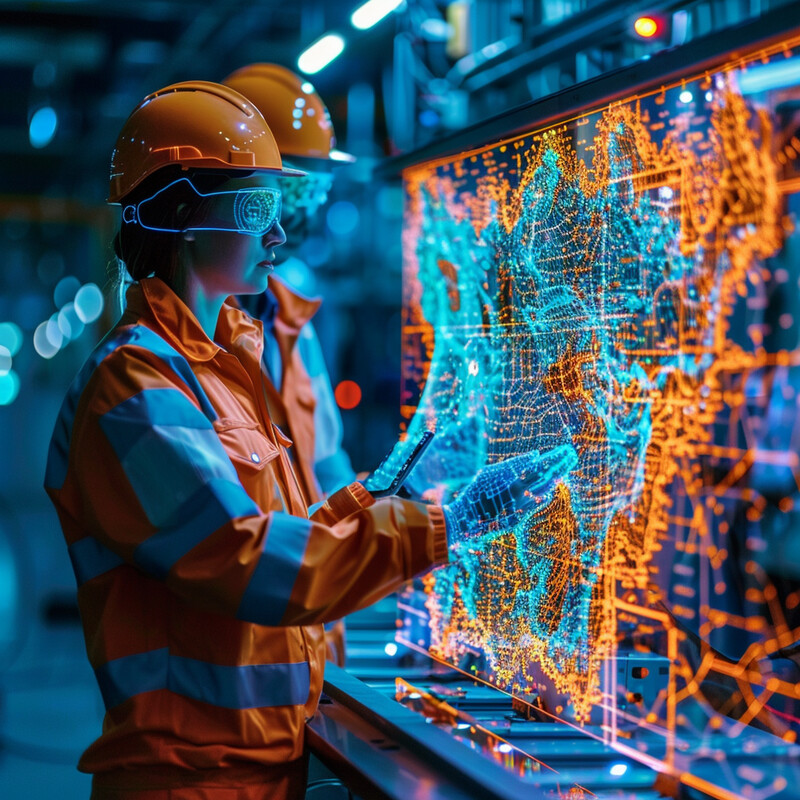
Utilities and infrastructure companies have reported substantial gains from using AI in post-disaster recovery. One industry analysis found that electric power utilities employing AI-based outage prediction and repair scheduling achieved roughly 30% faster power restoration to customers after major storms, compared to historical norms. This was accompanied by about 25% lower storm recovery costs because AI optimization meant fewer redundant crew deployments and more efficient use of equipment. These improvements were realized by feeding weather forecasts, sensor readings, and asset data into machine learning models that forecasted where damage would occur and recommended repair crew dispatch plans accordingly. Additionally, AI-driven inspections have sped up infrastructure evaluations: after a 2023 flood, an AI system processing drone images helped a state transportation agency inspect 85% of affected bridges within days, automatically identifying which bridges had potential structural issues needing immediate attention (something that previously took weeks of manual inspection). In Japan, city planners are using an AI “digital twin” platform to simulate earthquake impacts on critical infrastructure and devise optimal reinforcement and restoration sequences for power grids, roads, and airports. This kind of modeling, combined with real post-disaster data, means that when a disaster strikes, AI can suggest a prioritized repair roadmap (for example, fix this power substation before that transmission line to restore electricity faster) grounded in robust analysis. The early evidence from utilities and pilot programs indicates that AI can significantly accelerate infrastructure recovery, cutting down service downtimes and costs in the wake of disaster.
10. Public Health Monitoring
In the aftermath of disasters, public health threats such as disease outbreaks or contamination can emerge. AI assists health officials by monitoring diverse data streams for early signs of trouble – much faster than traditional methods. By analyzing data like emergency room visits, social media posts about symptoms, water quality sensor readings, and reports from clinics or shelters, AI algorithms can detect anomalous patterns that indicate a brewing outbreak (for example, a spike in stomach illness in a flood refugee camp). These systems can issue early warnings and even predict how an illness might spread, allowing authorities to intervene with medical resources or preventive measures (like vaccines or boil-water advisories) before the situation worsens. AI can also help triage large volumes of patient data, identifying which cases are high-risk. Additionally, AI language processing can scan global news to warn of any disease that might pose a risk to the affected region (important in a time when disasters can coincide with pandemics). By providing rapid, round-the-clock surveillance of health indicators, AI-enabled public health monitoring helps prevent secondary disasters – the outbreaks and health crises that often follow in the wake of natural catastrophes.
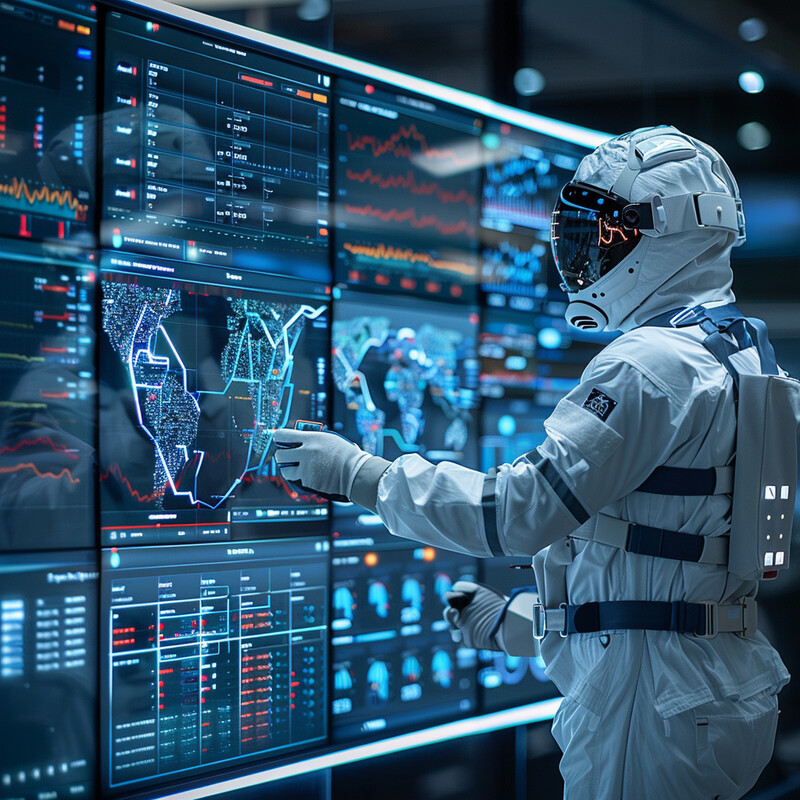
AI-based epidemic intelligence systems have shown they can detect outbreaks significantly faster than traditional health surveillance. These systems use machine learning and natural language processing to continuously comb through open sources (news reports, online forums, health records) for early “signals” of disease. According to a 2023 review, such AI digital surveillance can catch epidemic clues “much earlier” than conventional public health reporting methods. A famous example is the BlueDot platform, which in late 2019 identified an unusual cluster of pneumonia cases in Wuhan, China and alerted its clients on December 31 – nine days before the World Health Organization issued its first public warning about what became COVID-19. This AI warning gave some governments a head-start in mounting a response. In a post-disaster context, similar AI tools have been used to monitor disease after events like cyclones and earthquakes. For instance, after Cyclone Idai (2019) in Mozambique, an AI-driven analysis of health clinic data and social media chatter helped early identification of a cholera outbreak, prompting a quicker vaccination campaign (historically, such outbreaks might not be confirmed until hospitals overflow). In general, AI epidemic monitoring systems such as HealthMap, Epiwatch, and others are capable of sifting through vast data in real time and flagging health anomalies days or weeks sooner than manual methods. By enabling earlier intervention – whether it’s deploying medical teams or issuing public advisories – these AI systems can significantly reduce the scale and impact of post-disaster disease outbreaks.